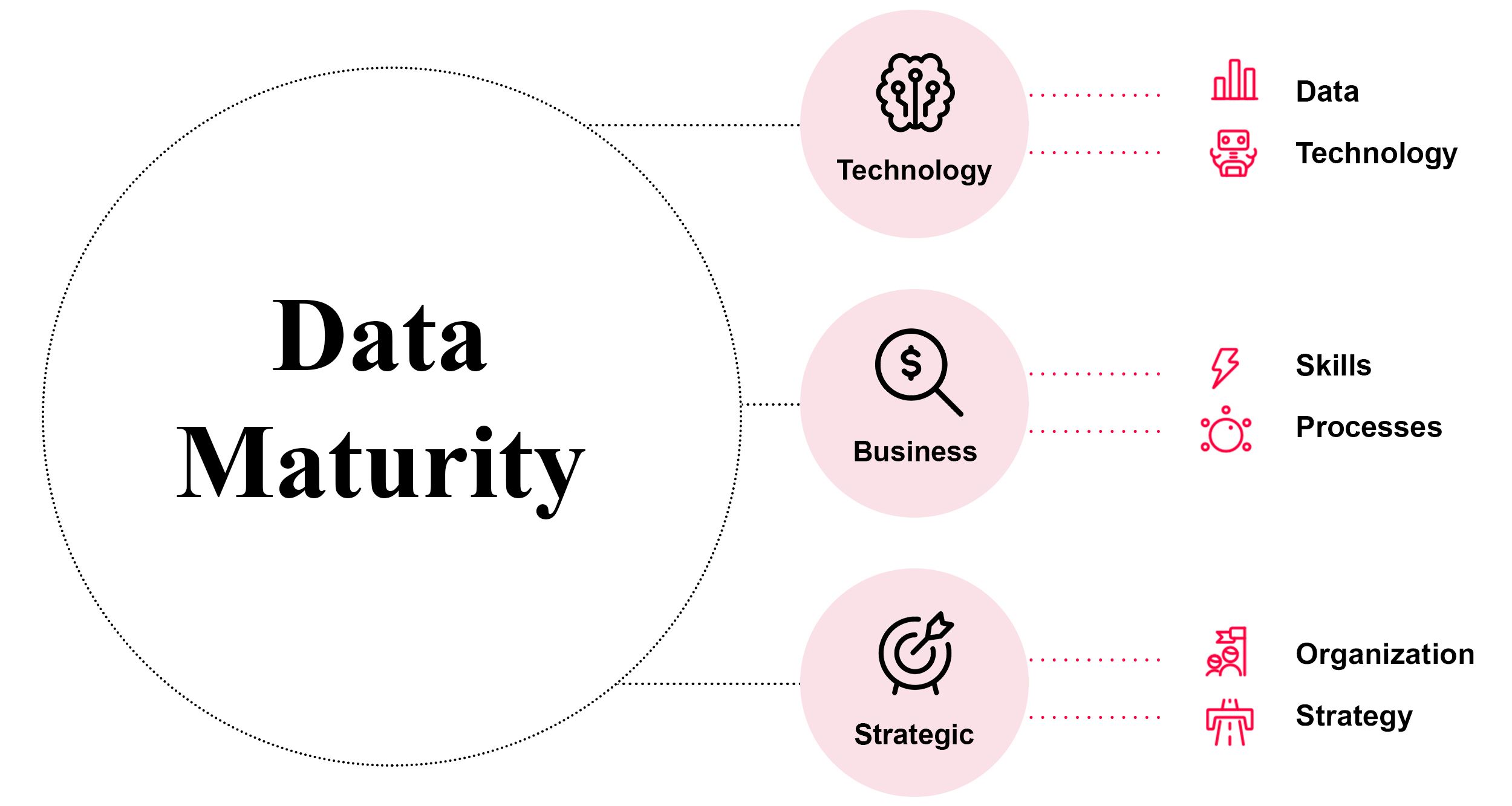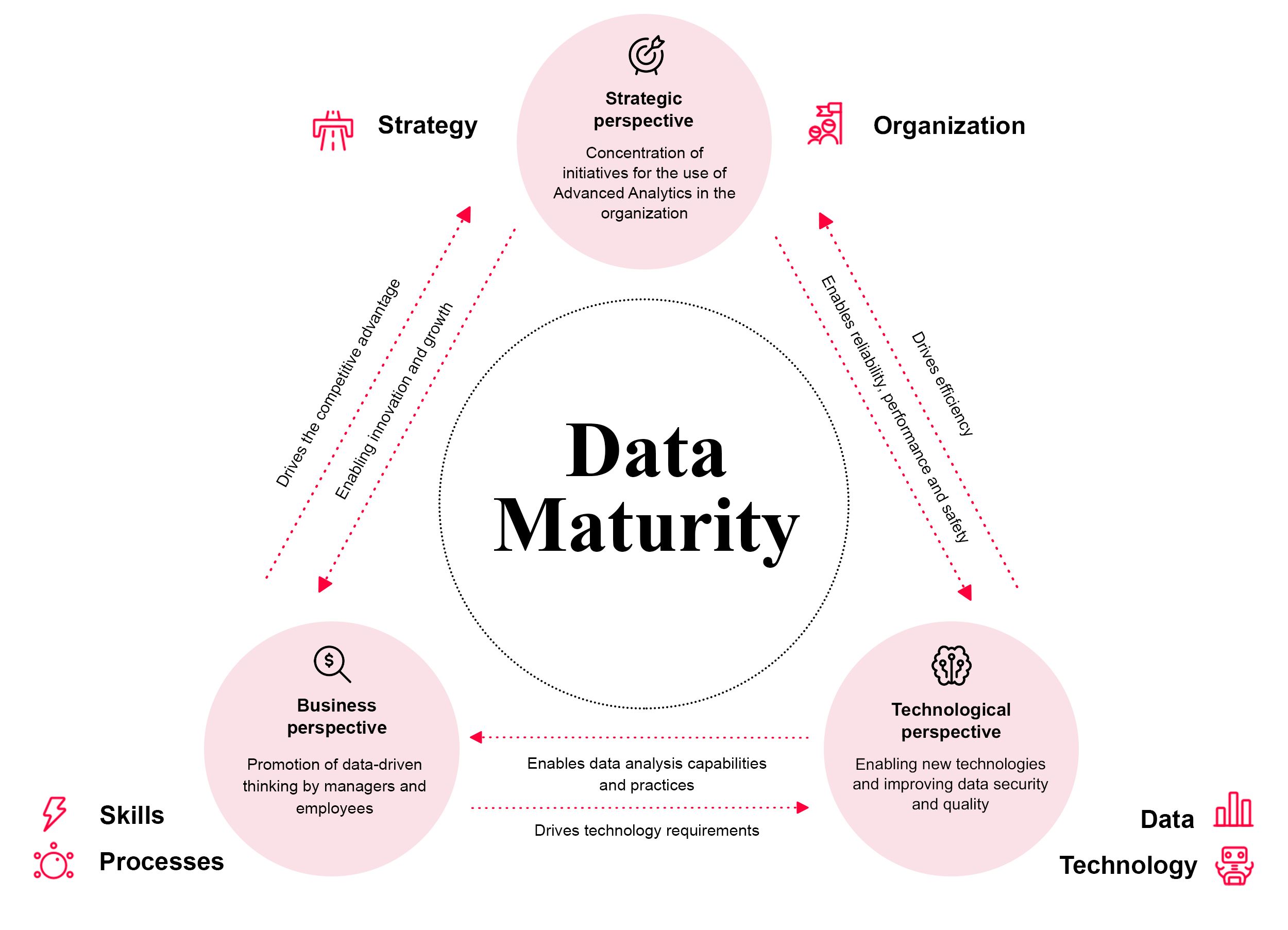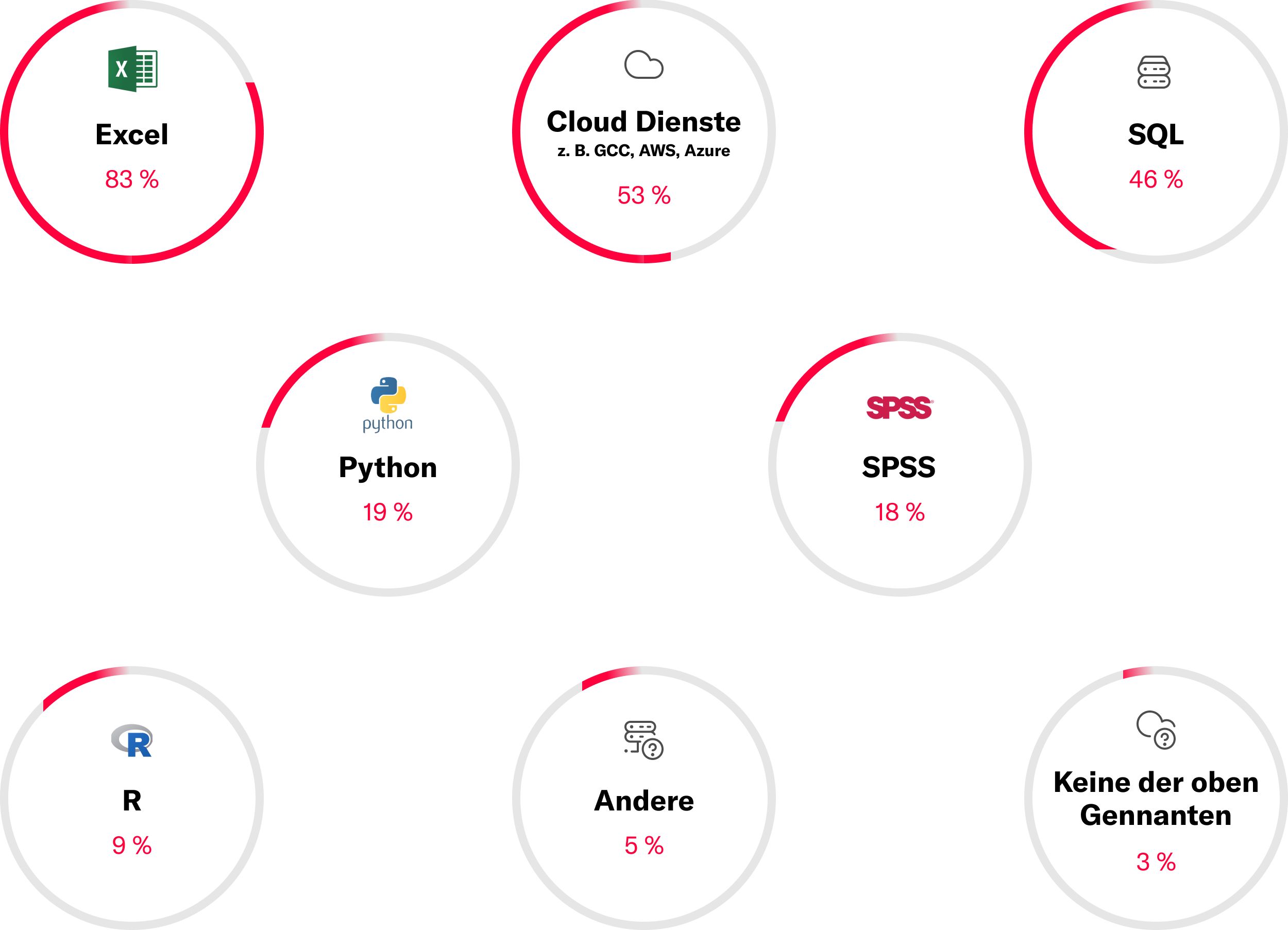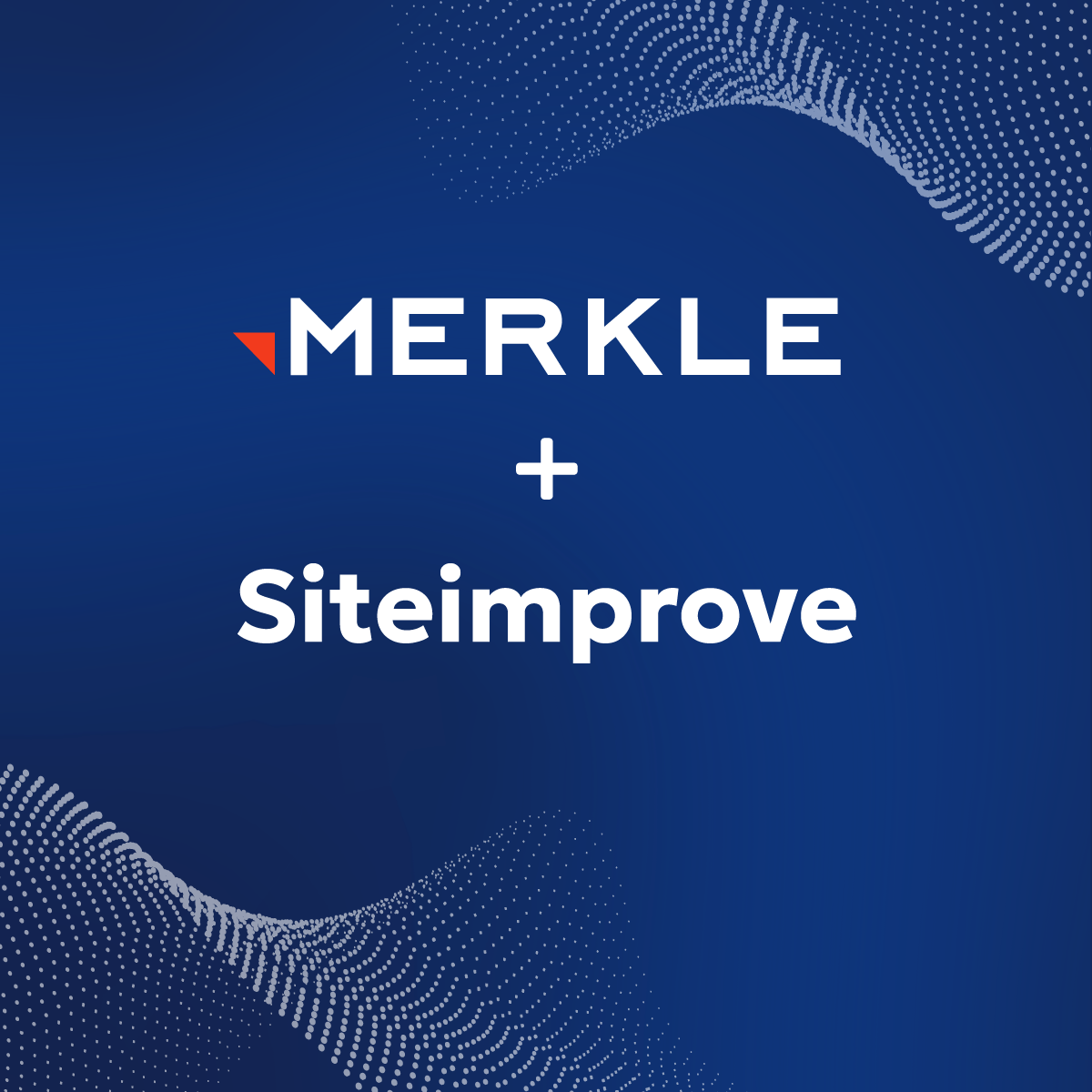Data Maturity: the business perspective
Skills and processes are important factors influencing the data maturity of companies. In this blog post we show how the ideal and reality diverge in practice
Recently, we at Merkle published a study on data maturity in German and Swiss companies. In a quantitative survey of 200 German and 100 Swiss companies from various industries, we investigated how well organizations already handle their collected data and how they benefit from it.
Having already carried out a number of assessments for other companies since the publication of the study, we have been able to gain interesting insights into the breakdown of the dimensions of our model.
In general, data can add value at different levels in a company. We therefore distinguish between the perspectives "strategy, technology and business". All perspectives offer starting points for optimization.

Strategic perspective:
In order to develop Advanced Analytics within a company in the long term, the topic should be provided for in the strategy as well as anchored within the organization. The strategic perspective thus combines the planned use of insights from data in the market with the current allocation of the creation of these insights in the organizational structure. One dimension cannot be developed efficiently without the other. If Advanced Analytics is not anchored in the organization, even the best strategy will not lead to any improvement. However, Advanced Analytics cannot be anchored in the organization without a long-term vision of how competitive advantages can be achieved through the targeted use of data.
Technological perspective:
The technological perspective considers the maturity of companies in terms of the dimensions data and technology. Both must be considered in combination. In order to use advanced tools and technologies to analyze data, it must be stored and managed appropriately. However, if you blindly optimize the storage of large amounts of data in an organization without considering the technologies that will integrate and use it, you may even hinder the future use of advanced data analysis technologies.
Business perspective:
"A company is only as good as its employees". Unfortunately, even the best employees with perfectly trained skills cannot achieve much without well-established business processes in a company. The business perspective describes this connection. While employees need the right processes to deliver the right analytical output at the right time, a suitable process is unfortunately not much use if employees are not able to perform data analysis and base decisions on it.

Each of these three perspectives has an effect on the other two (see figure above). If the business perspective is strengthened, a company drives its competitive advantage from a strategic perspective and also increases requirements to the technological perspective. On the other hand, a clear alignment of initiatives for the use of advanced analytics within the strategic perspective enables innovation and growth in the business as well as reliability, performance and security within the technological perspective. This in turn enables the further development of data analysis capabilities and practices in business and drives the efficiency of strategic initiatives.
In the first part of our blog series on "Data Maturity" I would like to take a closer look at the business perspective.
A key finding of our study is that data collection is becoming an end in itself in many companies. This was particularly evident in the fact that Excel continues to be used in most cases for data analysis. 83% of the respondents stated that they currently still handle a large part of their data analysis with Excel. The use of cloud services (53%) and SQL databases (46%) were ranked second and third. However, these are mostly only used for the structured and unstructured storage of data and not really for its analysis.

Why do most companies still only use Excel to evaluate their data?
Even though Excel is a powerful tool, it has its limits when it comes to evaluating deeper relations in large amounts of data. However, revealing these relationships can support making the right decisions at the right time.
If you look at the results of our study from a business perspective, the reasons are obvious. Often decision makers do not demand insights at all, or only if they show results that match their opinion according to their experience. 30% of the surveyed companies stated that decision makers still only consult reports, but in the end control the optimization themselves and make decisions based on experience. And even if this is not the case and decision makers actively request reports, some companies have not yet defined any, or only basic, analytical processes that produce and deliver such reports (49%). As a result, the creation of analyses and dashboards for data-based decision making is very costly and impractical.
In addition to a lack of processes, employees often lack the skills to produce in-depth reports. We distinguish between two types of analytical skills that different employees should have.
In companies, there is not only a lack of trained data analysts, but also too little understanding of data and insights among all other employees.
On the one hand, companies need trained analysts who are able to identify the right data, obtain it within the organization and gain insights from it. However, these are currently rather scarce on the market. In a study by Deloitte, for example, companies stated that only in 12% of cases it was really easy to find suitable data analysts for a vacancy. In 22% of the cases it was difficult or even very difficult. The reason is that data analysts must have a broad competence profile. On the one hand, they are expected to have statistical know-how and analytical skills, on the other hand, they must also have an understanding of the business and at the same time a certain understanding of IT.
In addition to analysts, companies often underestimate that all other employees who should use analysts' reports in decision-making also need a certain understanding of data. 22% of the companies surveyed in our study stated that, while employees can identify the data they need, they are not able to handle this data or interpret simple statistics. We have already experienced this result with customers. But often this is not the actual goal. Ideally, analysts should be able to prepare data in such a way that it can be easily understood by employees in other areas of expertise. However, as we have found out, these in turn are difficult to find on the market. So the cat is literally biting its own tail.
Even if companies routinely integrate insights from data into processes and have well-trained data analysts available, they are often hindered in their work by long-established organizational structures or outdated technologies and a lack of tools. As a result, they are more concerned with obtaining data within the organization and efficiently processing it than with the actual analysis and generation of insights. Read more about this issue in our next blog posts.
You want to break the vicious circle and improve your business perspective on data? We recommend relying on external experts if you want to be successful quickly and sustainably. New talent is currently being trained at universities, but it will be several years before they have gained enough experience to use their skills in organizations in a targeted and effective way.
Our experts are not only able to carry out data analyses for you, but also support you in identifying and solving optimization potentials and use cases, and in ideally preparing and automatically integrating the findings into processes for employees.
Our customer Siemens, for example, has recognized the problem of scattered and difficult to understand data and developed Analytics Unlocked together with us. The self-service platform aggregates data from various sources and compares it with previously selected campaign targets. This saves campaign managers the effort of collecting and summarizing data. Additionally it enables them to make the right decisions quickly and plan their budgets more effectively.
Download the study today and request an assessment of your data maturity!














